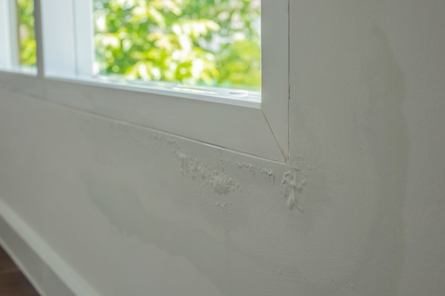5 Common Causes of Water Damage in Wood and How to Avoid Them
Water damage is a homeowner's worst nightmare. It can cause severe damage to the structure and foundation of a home, including the wood that makes up the framework.
When wood gets wet, it can quickly lead to the like of wood rot, spreading fast and leading to costly repairs and hazards for your family and home. To prevent this, it’s important to know what causes it. ServiceMaster by Singer is here to break down the dangers of wood rot and water damaged wood, five common causes of it, and what steps should be taken if you've already noticed it in your space.
What Happens When Water Damages Wood?
If water damage is left untreated, wood will begin to rot. Over time, this will lead to many serious problems that put your health, comfort, and safety at risk. Water damaged wood can lead to:
- Structural Weakness – Damp wood can rot in 7 days to a month. This causes warping, buckling, and splitting, all contributing to the possibility of collapse and other structural-related problems.
- Health & Respiratory Issues – Wet wood can lead to moisture and mold growth, which can cause allergens and irritate the nose, throat, lungs, or eyes. Mold and mildew growth can also produce mycotoxins, which can cause severe health problems.
- Pest Infestations – Besides mold, cockroaches, termites, and other pests are attracted to wet wood. If left unchecked, these pests will use your rotting wood as a source of food and shelter which causes significant damage to your home.
Not only can each of these issues leave you with costly repair bills, but they can also create an unsafe living environment for you and your family!
Common Places for Wood Rot Around Your Home
Wood rot is a common problem in many homes, especially in areas where moisture can accumulate. Here are the most common places where damp wood appears in homes:
- Windowsills and frames
- Door frames and thresholds
- Exterior trim and siding
- Wooden decks and patios
- Attic and crawl space vents
- Chimney surrounds and flashing
- Laundry room floors and walls
- Basement floors, walls, and ceilings
- Bathroom floors and walls
- Kitchen sink and dishwasher areas
It's important to regularly inspect these areas for signs of damage, such as discoloration, soft spots, or fungal growth. If you do find wood rot, it should be repaired as soon as possible. The associated water source should also be repaired to prevent the problem from happening again.
Common Causes of Wood Rot Found in Your Home
Water damage causes wood rot, but where does the moisture come from? Our Baltimore restoration experts have extensive experience in detecting and repairing water damage, giving us insight into the most common causes of water damage that lead to damage:
- Leaky Roofs – Leaking roofs are often left unchecked and can be one of the main sources of water damage due to poor maintenance or weather conditions over time. The best way to catch any issues early is to keep an eye out for any signs such as puddles, damaged siding or shingles, or even increased interior moisture.
- Broken Pipes – You don’t want to ignore leaks or burst pipes, as they can lead to extensive damage if left unchecked for too long! Pay attention to any signs, such as puddles or wet patches around walls and baseboards. Be sure to also look at our tips to avoid burst pipes as the weather changes in Baltimore.
- Poor Home Maintenance – This can range from forgetting to check your gutters, windows, and doors regularly for any signs of water damage or simply wiping away any spills or puddles immediately. Addressing water damage as soon as possible is the best way to avoid extensive repairs related to wood rot.
- Flooding from Weather – While floods and storms can’t always be avoided, proper preparation measures can be taken to protect your home from taking too much water damage. This includes adding sandbags or ensuring your property's storm drains are clean and clear.
- Too Much Humidity and Moisture – Keeping an eye on your home’s humidity levels is essential in preventing wood rot from water damage. Consider buying a dehumidifier for your Baltimore home during summer to combat high humidity levels ranging from mid-60s to high-70s.
Take Immediate Action to Stop Further Water Damage
If you've discovered water damage in your home, it's important to take quick action to prevent moisture from seeping into other areas of your home or property:
- If the issue is minor, like a leaky sink or clogged storm drain, taking steps to dry up the moisture and fix the source of the leak or flooding should do the trick.
- If the issue is severe, like flooding from outside sources or water damage accompanied by mold growth, it's best to call on a professional water damage restoration company for help. They have the knowledge and resources to quickly identify water damage and ensure it's completely removed from your property.
Early intervention is key when it comes to water damage, as it can help prevent secondary damage from occurring, like wood rot, mold growth, and more. This translates into lower repair costs and less time spent dealing with the damages.
Turn to ServiceMaster by Singer for Water Damage Restoration in Baltimore
Whether you have wood rot in your home's beams or aren’t sure of the extent of your hidden plumbing leak's damage, ServiceMaster by Singer is here to help. Our team of restoration experts will take care of your property and identify the extent of the damage while also offering services that address the root of the problem and make sure it doesn't happen again.
Don't wait until it's too late – contact us online to request your Baltimore water damage assessment!


